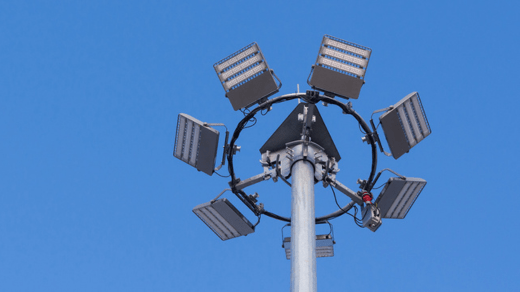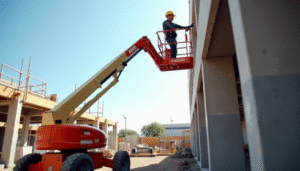
High mast lighting
Light pollution, an unintended consequence of urbanization and industrialization, has become a growing concern worldwide. It not only obscures the celestial beauty of the night sky but also has detrimental effects on the environment, human health, and wildlife. High mast lighting systems, while essential for safety and security in many areas, can exacerbate light pollution. This article explores the challenges associated with minimizing light pollution when using high mast lighting systems and discusses the technologies and practices that offer solutions to reduce light spill and skyglow.
Understanding Light Pollution
Light pollution is the excessive, misdirected, or obtrusive artificial light produced by human activities. It can manifest in several forms:
Skyglow: The brightening of the night sky over populated areas, making it difficult to observe stars and celestial objects.
Light trespass: Unwanted or intrusive light that spills over into areas where it is not needed, disturbing people’s sleep and interfering with the nocturnal activities of animals.
Glare: Excessive brightness that causes visual discomfort and reduces visibility.
Clutter: Excessive grouping of bright, confusing, and excessive lights, often seen in urban areas.
The Challenge with High Mast Lighting
High mast lighting systems, characterized by tall poles with multiple powerful light fixtures, are commonly used in various settings such as highways, airports, industrial areas, and sports complexes. While they provide necessary illumination for safety and security, they are also significant contributors to light pollution due to their height and intensity.
Challenges with High Mast Lighting and Light Pollution:
- Over-illumination: High mast lighting systems often use more light than necessary, leading to excessive brightness and glare.
- Poorly designed fixtures: Some high mast fixtures direct light upward or outward, contributing to skyglow and light trespass.
- Inefficient technology: Older lighting technologies like high-pressure sodium lamps are less efficient and produce a considerable amount of light pollution.
Solutions to Minimize Light Pollution with High Mast Lighting
- LED Technology: Light Emitting Diodes (LEDs) are more energy-efficient and allow for precise control of light direction. Using well-designed LED fixtures can significantly reduce light spill.
- Shielding and Optics: Installing shields or optics on high mast fixtures helps direct light where it’s needed while preventing it from escaping upward or outward.
- Timers and Sensors: Implementing timers and motion sensors can ensure that high mast lights are only active when necessary, reducing over-illumination during low-traffic periods.
- Lighting Design: Careful planning and design of high mast lighting layouts can minimize overlap and reduce clutter.
- Dark Sky Initiatives: Encouraging adherence to dark sky-friendly lighting principles, such as those promoted by the International Dark-Sky Association, can be a key step in minimizing light pollution.
- Community Awareness: Educating communities about the importance of reducing light pollution and involving them in decision-making processes can lead to more responsible lighting practices.
- Legislation and Regulations: Implementing and enforcing lighting ordinances that restrict light output, fixture types, and light angles can be effective in mitigating light pollution.
Conclusion
Minimizing light pollution while using high mast lighting systems is a complex challenge, but it’s not insurmountable. By embracing advanced lighting technologies, implementing thoughtful design, and fostering awareness and regulatory changes, we can significantly reduce the adverse effects of light pollution on our environment, health, and the enjoyment of our natural nightscapes. Balancing the need for safety and security with responsible lighting practices is not only possible but crucial for preserving the beauty of our night skies for future generations.





